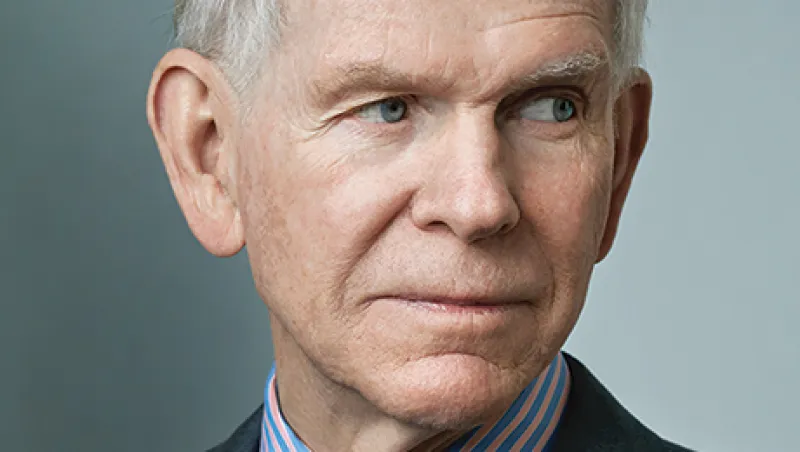Venture capital has always been a high-risk, high-reward proposition. Its current surge is finding an unlikely proponent in legendary investor Jeremy Grantham.
The billionaire has a worthy cause in mind: his Grantham Foundation for the Protection of the Environment. “My foundation is aspiring to an extremely large 40 percent allocation to venture capital, because that is where I see the greatest potential, and we certainly need all the money we can make trying to protect the environment,” Grantham says in his office at the Boston headquarters of Grantham, Mayo, Van Otterloo & Co., the $120 billion asset manager he co-founded in 1977.
The U.K. native launched his $617 million foundation in 1997 to concentrate on climate change and agriculture. In February it announced its involvement in a new $430 million fund with Boulder, Colorado–based Vision Ridge Partners and Capricorn Investment Group of New York that will focus on clean-energy companies and other sustainable assets.
Venture capital is uniquely suited for mission-driven, or impact, investing because investors can give early support to companies that share their values and help to bring those businesses and values to market, says the slender, sharply dressed Grantham.
When he isn’t speaking with clients, the foundation is his main focus. Having handed day-to-day investment decisions over to co-head of asset allocation Benjamin Inker several years ago, Grantham, 77, seems well suited to his current role as GMO’s resident big thinker. A stone’s throw from Harvard Yard, his office feels more like that of a college professor than of a buttoned-up investor, with stacks of articles mixed in among Asian artifacts.
Grantham started GMO after working as an economist for Royal Dutch Shell and co-founding his first firm, Batterymarch Financial Management, in Boston in 1969. A pioneer in quantitative investing, Batterymarch was eventually bought by U.S. asset management giant Legg Mason, ceasing operations under its original name in 2014.
Grantham has praised U.S. venture capital for its depth and strength. “Americans apparently have more animal spirits than most,” he wrote in his latest quarterly investor letter. U.S. entrepreneurs launch far more start-ups than their peers elsewhere and dominate the creation of new global brands, he notes. As a result, the nation has the world’s largest venture capital industry, and it’s being fed by top research universities, most of them American, which churn out new company founders and MBAs.
The letter was a forgiving, if not chipper, take on the upstarts in the U.S. economy, a sentiment that felt somewhat unusual for Grantham, who is better known for his bearish views. He’s staked his career on analyzing market bubbles and knowing when to act defensively. For example, before the tech bubble burst in 2000, he took most of his client portfolios to a combination of cash and bonds because he thought valuations were getting too high.
GMO has never allocated to venture capital, sticking to more traditional asset management, but Grantham likes how the numbers work out for venture investments in a low-yield environment.
“I am particularly interested for a separate reason, and that is the enormous gap that has grown up in the returns available from a corporate investor internally investing capital and the returns available to an institution investing in stocks,” he says: “If you look at the somewhat dire seven-year growth forecasts like GMO’s, and you lock in a price-to-book valuation, you’re making 3 to 3.25 percent in perpetuity in public equities, and corporate investors are making 10 to 12 percent return on equity. I’ll take the 12 percent, thank you.”
But Grantham remains mindful of the risks. Even as deal makers grow more cautious about pricing, U.S. venture firms raised some $13 billion in the first quarter alone, according to data provider Dow Jones VentureSource. Grantham calls such inflows “disturbingly large,” explaining that investors generally do better when the money raised in a given vintage year is lower, because there isn’t as much competition in the market driving up valuations.
Still, those willing to come in at the venture stage during this frothy time can enjoy better returns than they’ll get from stakes in established companies at two to three times the value of the business, Grantham says: “If I’m right, what you should also see is a great opportunity for privately held firms because they aren’t wasting their money on stock buybacks, which have limited the growth rate of listed companies.”






